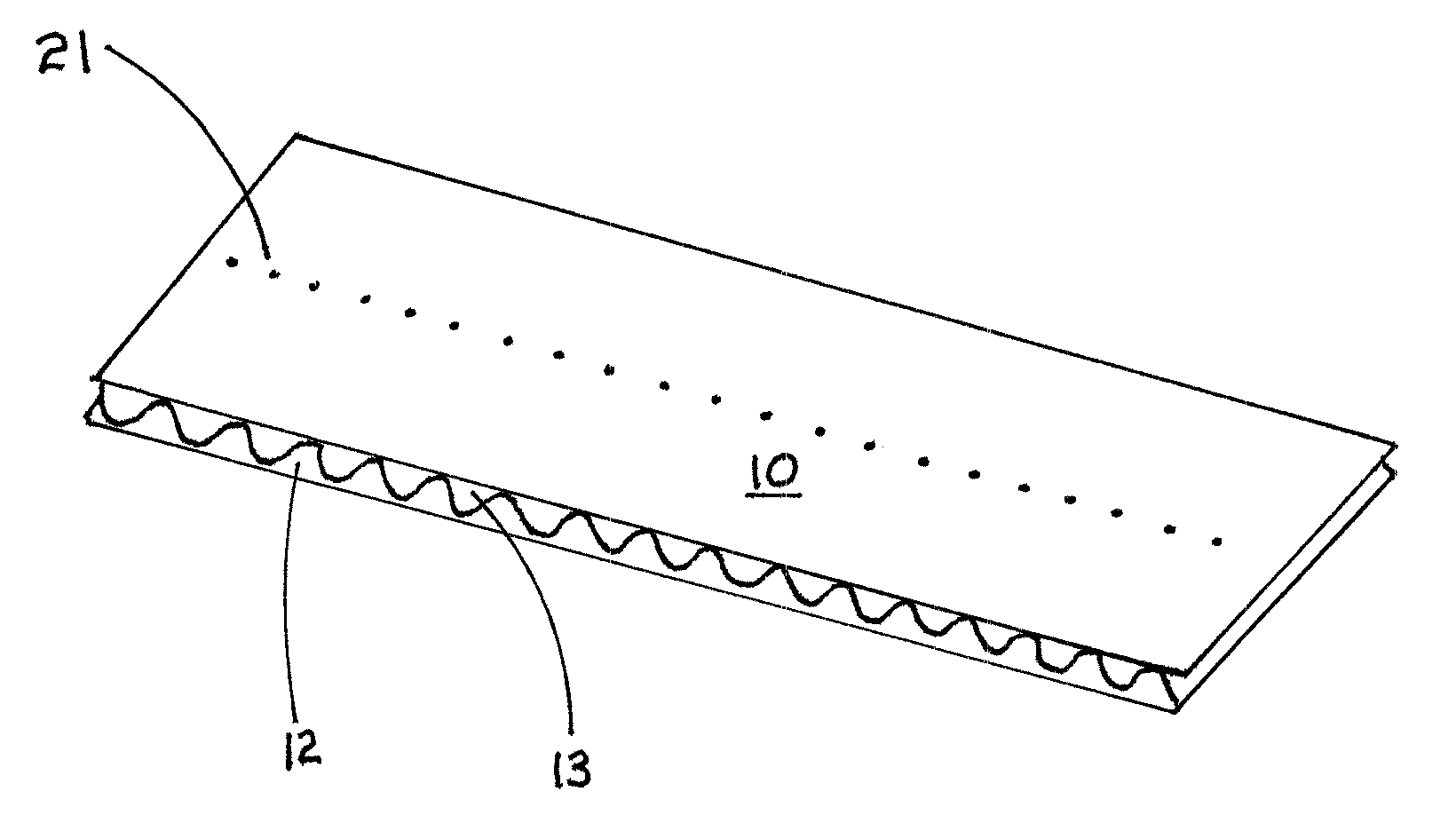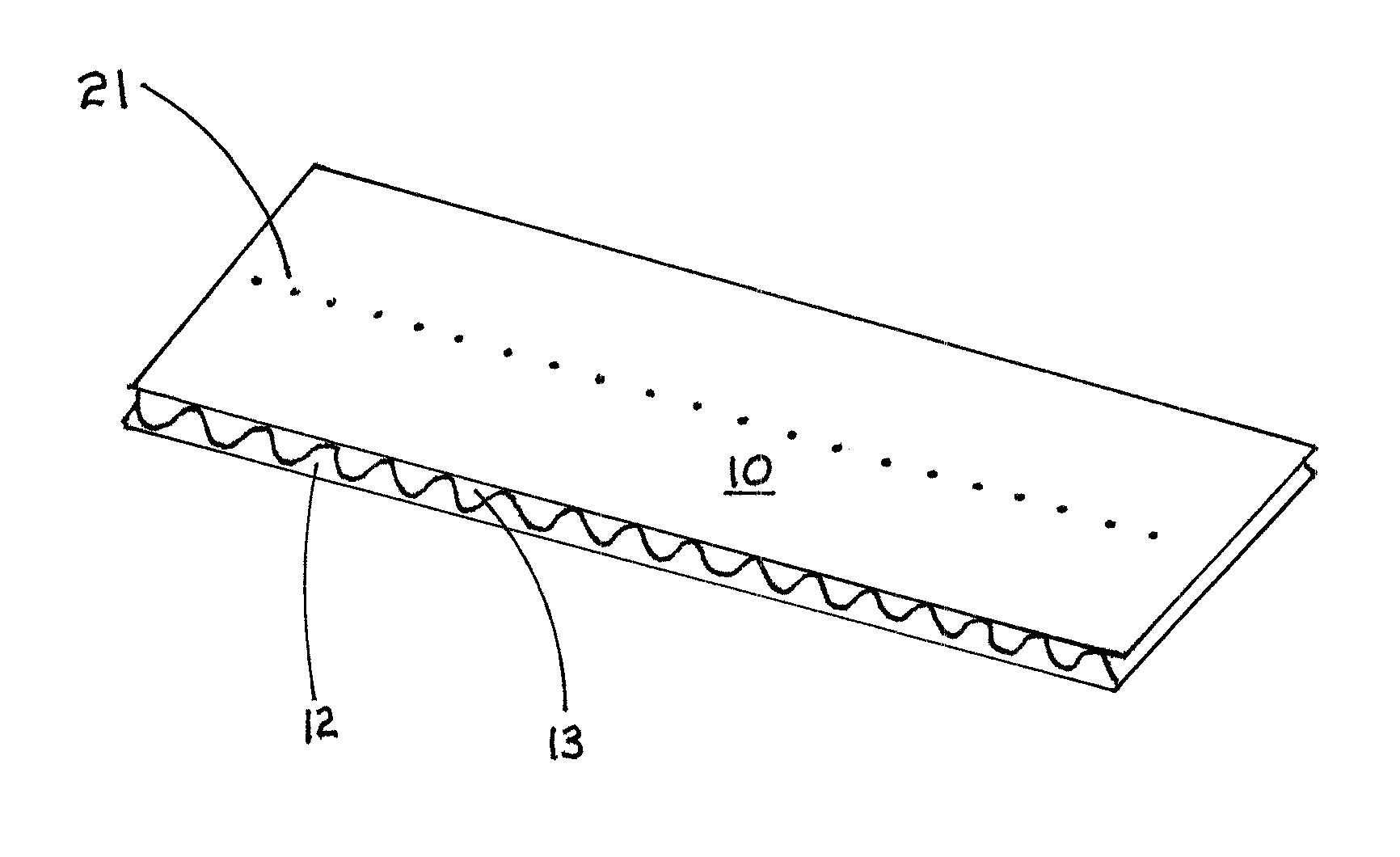Pheromone Glue Beetle Trap
a technology of pheromone glue and beetle trap, which is applied in the field of pheromone glue beetle trap, can solve the problems of different strains of beetle that can be harmful in the ecological system of the honey bee hive, add complex and additional weight to the standard honey bee hive configuration,
- Summary
- Abstract
- Description
- Claims
- Application Information
AI Technical Summary
Benefits of technology
Problems solved by technology
Method used
Image
Examples
Embodiment Construction
[0015]The drawing shows a typical corrugated cardboard construction label 10. The corrugated areas representing by the labels 12 and 13 are sprayed with the glue substance during the construction of the corrugated cardboard. All the surfaces within the corrugated cardboard are sprayed with the glue during the construction of the corrugated cardboard. The glue will also ensure that the corrugated cardboard retains its structural integrity. Label 21, the perforated holes are made during the injection of the natural pheromones into the corrugated areas representing by the labels 12 and 13. The corrugated cardboard shall be constructed such that it can be cut into suggested strips 2 inches to 3 inches wide by 6 inches to 8 inches long. Each strip variation has the pheromone injected centrally located in the strip.
PUM
 Login to View More
Login to View More Abstract
Description
Claims
Application Information
 Login to View More
Login to View More - R&D
- Intellectual Property
- Life Sciences
- Materials
- Tech Scout
- Unparalleled Data Quality
- Higher Quality Content
- 60% Fewer Hallucinations
Browse by: Latest US Patents, China's latest patents, Technical Efficacy Thesaurus, Application Domain, Technology Topic, Popular Technical Reports.
© 2025 PatSnap. All rights reserved.Legal|Privacy policy|Modern Slavery Act Transparency Statement|Sitemap|About US| Contact US: help@patsnap.com


